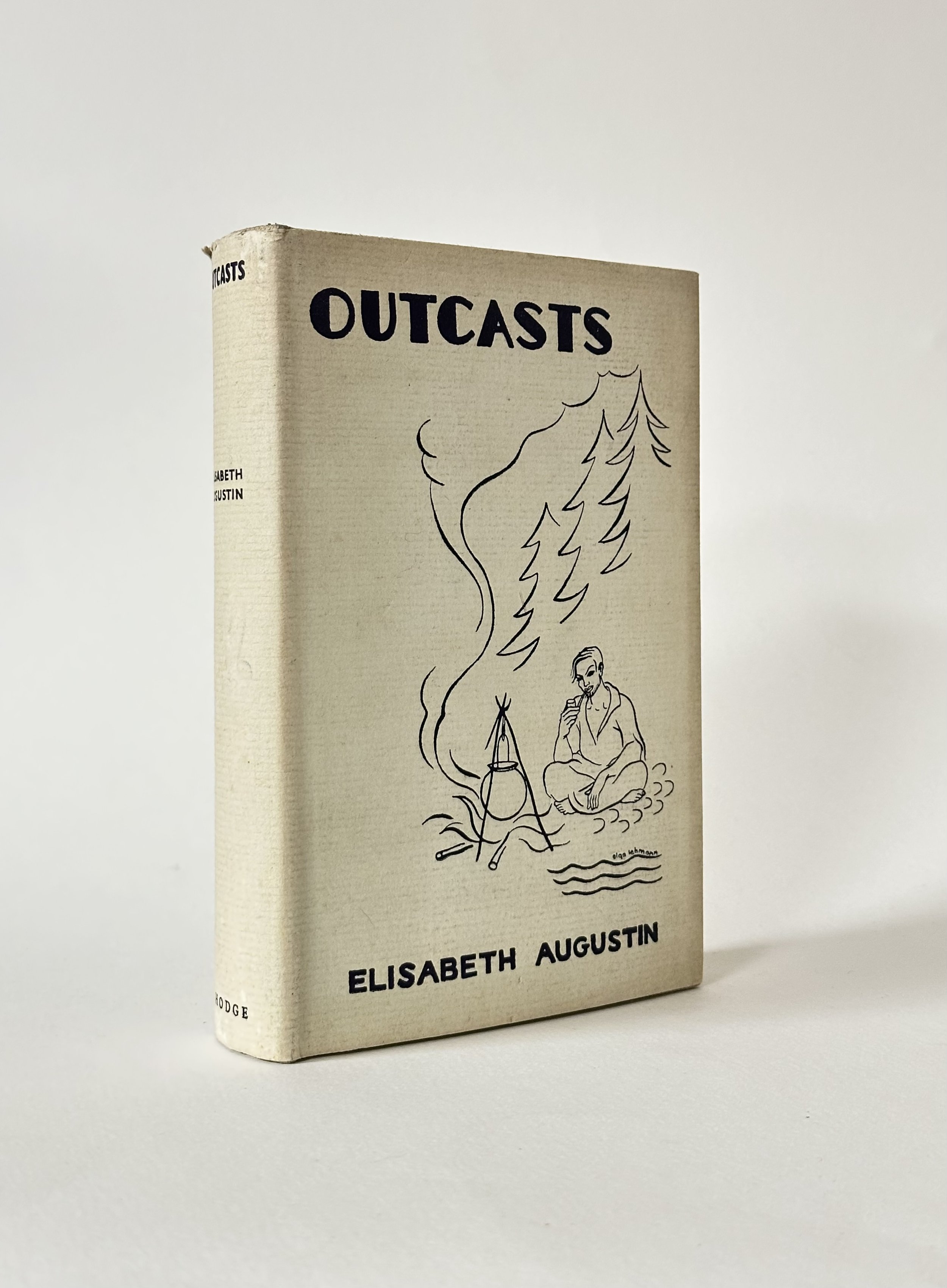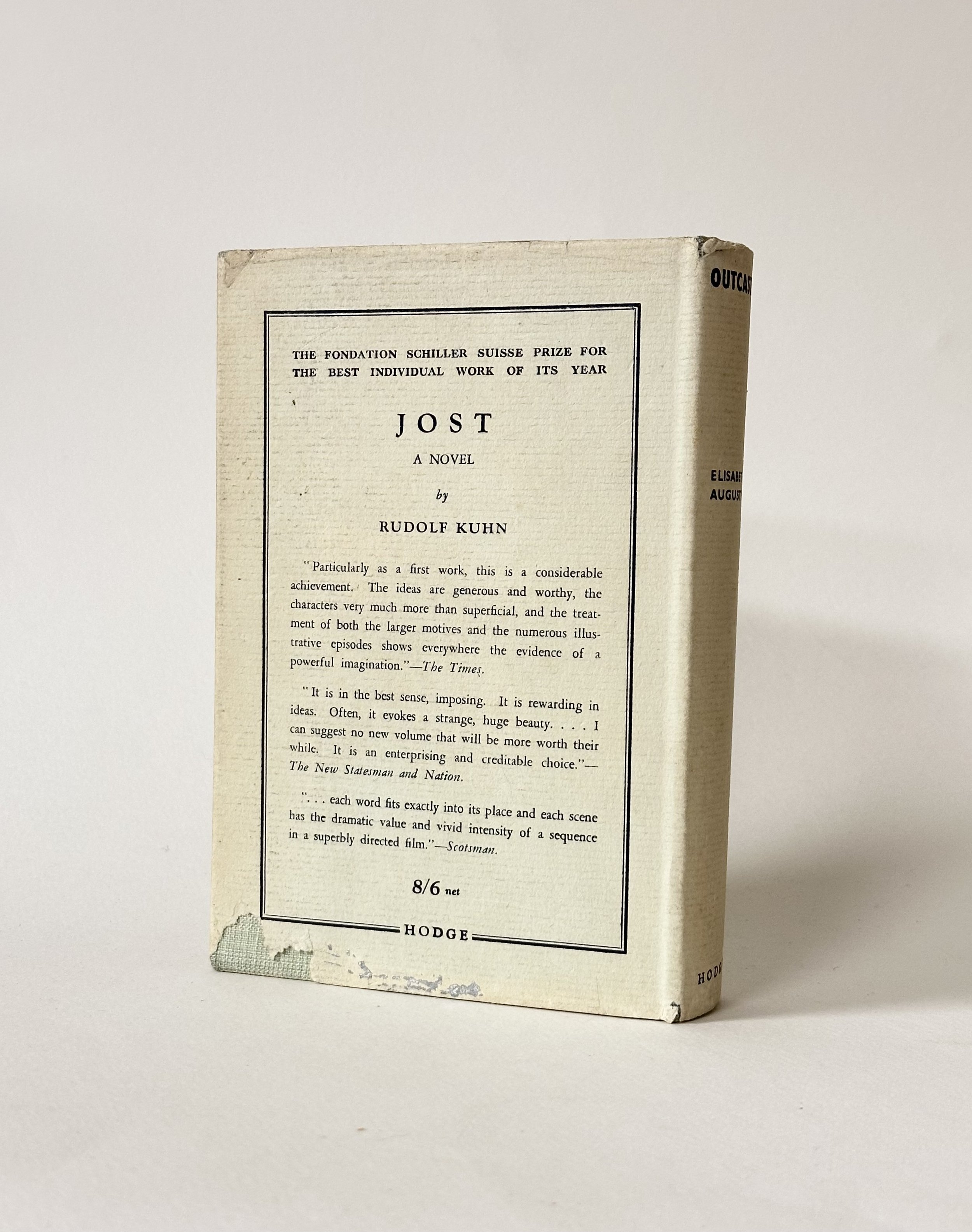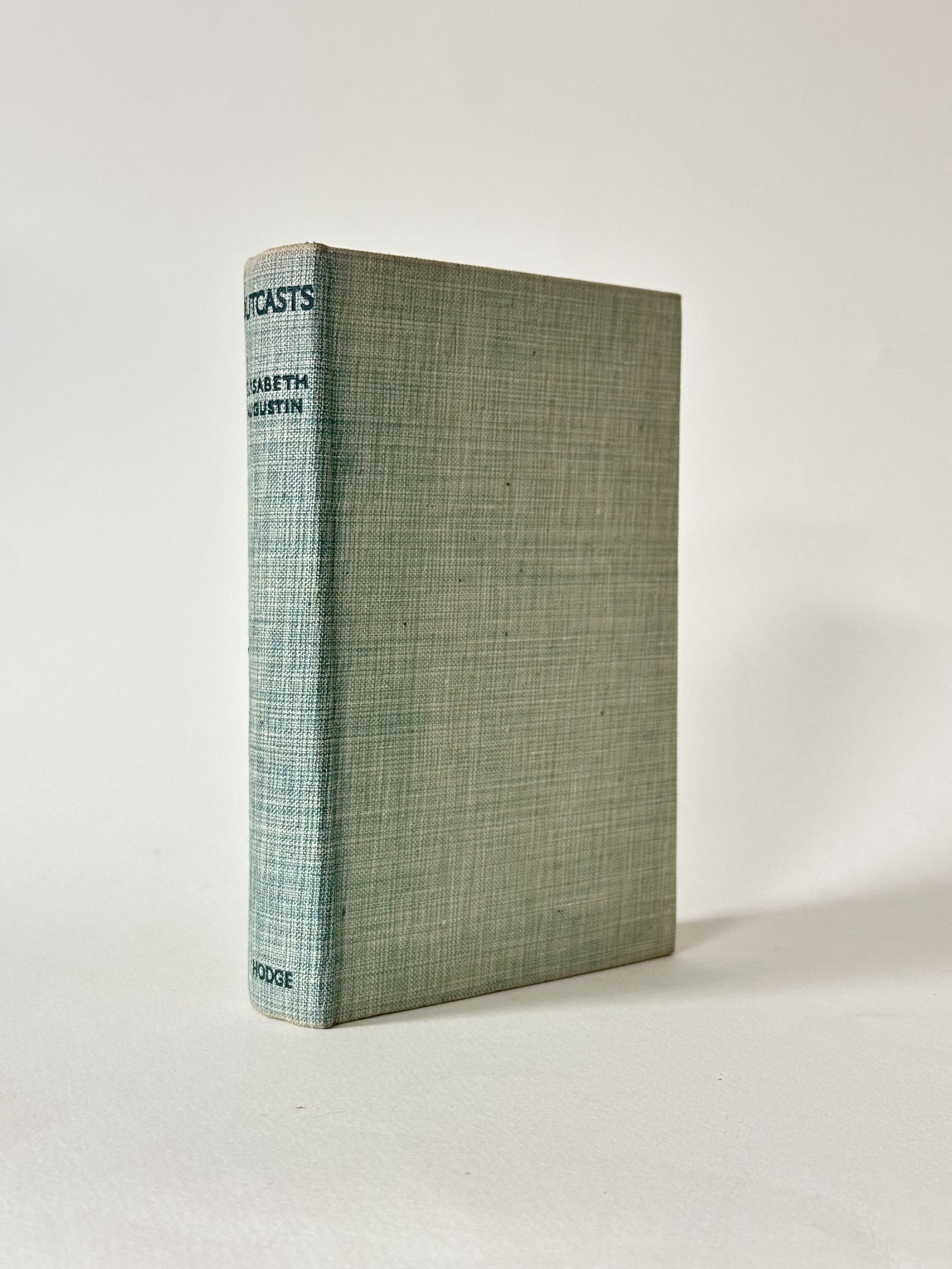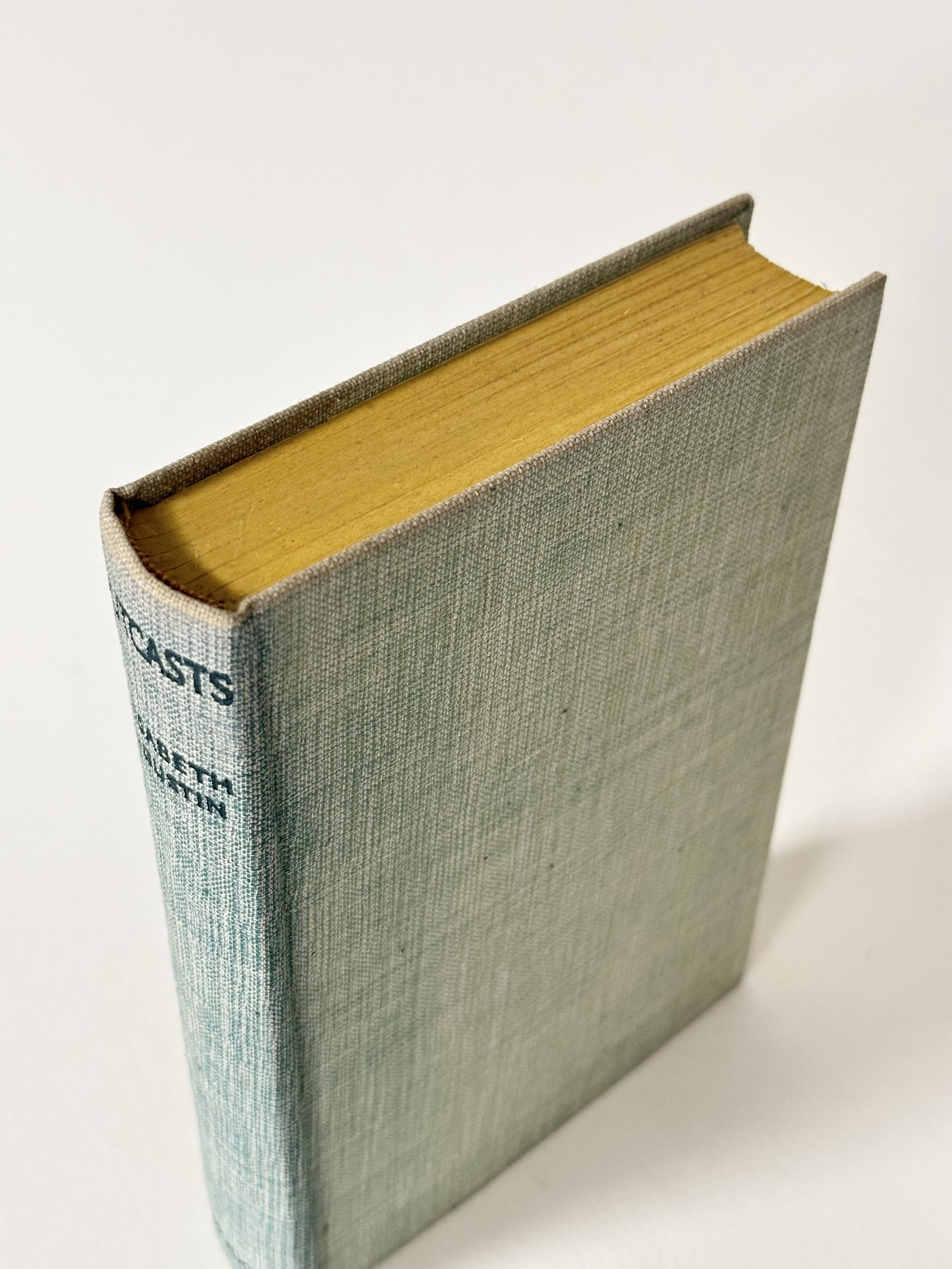 Image 1 of 4
Image 1 of 4

 Image 2 of 4
Image 2 of 4

 Image 3 of 4
Image 3 of 4

 Image 4 of 4
Image 4 of 4





AUGUSTIN, Elisabeth. Outcasts
AUGUSTIN, Elisabeth. Outcasts. Trans. from the German by Margaret Goldsmith. London: William Hodge. 1937. Publisher’s blue-green buckram lettered in black to the spine, in the superb dust jacket designed by Olga Lehmann. An about fine copy, the cloth perhaps a little discoloured at boards, certainly fuller in colour and tone at the spine. The binding firm and square, the contents clean and fine with some offsetting to endpapers. The dust jacket unclipped (7/6 net) and very sharp, spine head gently rubbed and with some nibbles to rear panel bottom edge. To the spine is what appears to be a faint crayon price. Nevertheless, a sharp copy.
The German author’s first novel to be published in English; perhaps her only work to be so. The novel was originally accepted for publication in Germany, but was not distributed due to the growing intensity of the Nazi regime; the book speaks of freedom but does not specifically decry the Nazi regime—its focus is in fact Russia. After the disappointment of its removal for publication, and with the threat of deportation, she fled for the Netherlands, publishing the novel in 1935. By 1942, her father had passed away, her mother deported to Sobibor extermination camp and murdered in the gas chambers. Much of Augustin’s later works were centred on the Holocaust, despite not being Jewish. The jacket appears to be Olga Lehmann’s first dust jacket design. At the time of publication, she had just finished several black and white wallpaper designs for John Line Ltd., and evidently transferred the style to the jacket here. Scarce. OCLC locates five copies.
AUGUSTIN, Elisabeth. Outcasts. Trans. from the German by Margaret Goldsmith. London: William Hodge. 1937. Publisher’s blue-green buckram lettered in black to the spine, in the superb dust jacket designed by Olga Lehmann. An about fine copy, the cloth perhaps a little discoloured at boards, certainly fuller in colour and tone at the spine. The binding firm and square, the contents clean and fine with some offsetting to endpapers. The dust jacket unclipped (7/6 net) and very sharp, spine head gently rubbed and with some nibbles to rear panel bottom edge. To the spine is what appears to be a faint crayon price. Nevertheless, a sharp copy.
The German author’s first novel to be published in English; perhaps her only work to be so. The novel was originally accepted for publication in Germany, but was not distributed due to the growing intensity of the Nazi regime; the book speaks of freedom but does not specifically decry the Nazi regime—its focus is in fact Russia. After the disappointment of its removal for publication, and with the threat of deportation, she fled for the Netherlands, publishing the novel in 1935. By 1942, her father had passed away, her mother deported to Sobibor extermination camp and murdered in the gas chambers. Much of Augustin’s later works were centred on the Holocaust, despite not being Jewish. The jacket appears to be Olga Lehmann’s first dust jacket design. At the time of publication, she had just finished several black and white wallpaper designs for John Line Ltd., and evidently transferred the style to the jacket here. Scarce. OCLC locates five copies.
AUGUSTIN, Elisabeth. Outcasts. Trans. from the German by Margaret Goldsmith. London: William Hodge. 1937. Publisher’s blue-green buckram lettered in black to the spine, in the superb dust jacket designed by Olga Lehmann. An about fine copy, the cloth perhaps a little discoloured at boards, certainly fuller in colour and tone at the spine. The binding firm and square, the contents clean and fine with some offsetting to endpapers. The dust jacket unclipped (7/6 net) and very sharp, spine head gently rubbed and with some nibbles to rear panel bottom edge. To the spine is what appears to be a faint crayon price. Nevertheless, a sharp copy.
The German author’s first novel to be published in English; perhaps her only work to be so. The novel was originally accepted for publication in Germany, but was not distributed due to the growing intensity of the Nazi regime; the book speaks of freedom but does not specifically decry the Nazi regime—its focus is in fact Russia. After the disappointment of its removal for publication, and with the threat of deportation, she fled for the Netherlands, publishing the novel in 1935. By 1942, her father had passed away, her mother deported to Sobibor extermination camp and murdered in the gas chambers. Much of Augustin’s later works were centred on the Holocaust, despite not being Jewish. The jacket appears to be Olga Lehmann’s first dust jacket design. At the time of publication, she had just finished several black and white wallpaper designs for John Line Ltd., and evidently transferred the style to the jacket here. Scarce. OCLC locates five copies.
